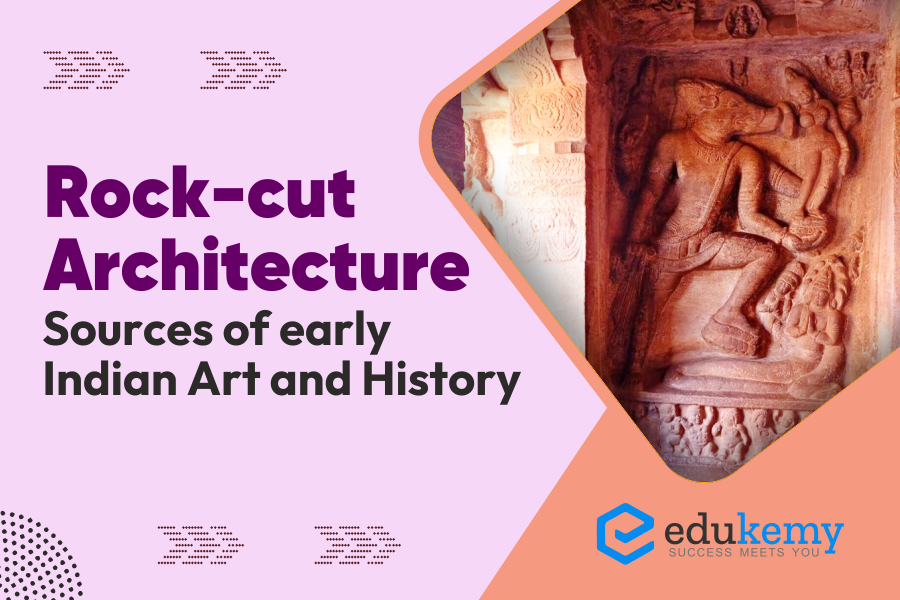UPSC Mains General Studies Paper – 1 Mains 2020
Indian Culture
UPSC Mains Civil Services IAS Exam Question Paper – 2020
Contents
- 1 Decoding the Question
- 2 Answer
- 3 Frequently Asked Questions (FAQs)
- 3.1 Q: What is rock-cut architecture, and why is it significant in early Indian art and history?
- 3.2 Q: Which periods in Indian history are associated with prominent examples of rock-cut architecture?
- 3.3 Q: What purposes did rock-cut structures serve in ancient India?
- 3.4 Q: How did the technology of rock-cut architecture contribute to early Indian civilization?
- 3.5 Q: Can rock-cut architecture be considered a reflection of the cultural and religious diversity of ancient India?
- 4 In case you still have your doubts, contact us on 9811333901.
Decoding the Question
- In the Introduction, define what is rock-cut architecture and the significance of it.
- In Body, describe how it is a source of knowledge of early Indian art and history with examples.
- Conclude with the insights that it projects even today and summarize it.
Answer
Introduction
Rock-cut architecture occupies a very important place in the history of Indian Architecture as they present the most spectacular piece of ancient Indian art specimens. .It is a type of Rock Art in which a structure is created by carving it out of solid natural rock. There are more than 1,500 rock-cut structures in India. Most of the rock-cut structures were closely associated with various religions and religious activities including social and political activities.
Significance of Rock Cut Architecture
Religious Knowledge:
Numerous caves were excavated to depict religious values.
- Buddhist: Chaitra and Viharas Bhaja and Karle caves at western Ghats, Ajanta caves
- Hindu: Kailasanatha temple at Ellora, Shore temples. Mahabalipuram
- Jainism: Udaygiri and Khandagiri caves, Ellora caves
- Ajivika Sect: Barabara caves
Way of life:
The Barabar caves throw light on the kind of tools used by prehistoric people and the evolution from the Palaeolithic to the Chalcolithic era. Lomas Rishi’s caves illustrate Jataka tales and put light on the daily ways of life during the period.
Economic Knowledge:
Bhaja and Karle were at famous trade routes in western Ghats which used to connect seaports to interiors. The caves at Kanheri and Ajanta show indications of the association between religion and commerce.
Educational Knowledge:
The famous Kanheri caves in western India were an educational hub where the evidence of water harvesting can be found. Bhaja cave has clusters of Stupas, where the relics of the teachers were obtained.
Society:
The earliest caves employed by humans were natural caves used by local inhabitants for a variety of purposes, such as shrines and shelters. Example: Bhimbetka
Environment Conservation:
Water resources are prevalent at Kanheri which shows water harvesting was practiced at caves.
Gender equality:
Mandapeshwar, a small cave at its entrance shows equality of gender in the form of sculptures of donor couples.
Conclusion
Thus rock-cut architecture across India provides information about the life and times of ancient Indian people and helps us understand their society through their lens. It helps us to trace the life in India from its origin and its Evolution through socio–political perspective and how it changed the Indian way of life.
Frequently Asked Questions (FAQs)
Q: What is rock-cut architecture, and why is it significant in early Indian art and history?
Answer: Rock-cut architecture involves carving structures directly into natural rock formations. In early Indian art and history, this form of architecture is crucial as it provides tangible insights into the artistic and architectural preferences, technological advancements, and cultural practices of ancient civilizations.
Q: Which periods in Indian history are associated with prominent examples of rock-cut architecture?
Answer: Rock-cut structures flourished during various periods, including the Maurya, Gupta, and Chalukya dynasties. Examples such as the Ajanta and Ellora Caves from the Gupta period showcase intricate artistry, while Badami and Elephanta Caves from the Chalukya period exhibit unique regional styles.
Q: What purposes did rock-cut structures serve in ancient India?
Answer: Rock-cut structures served diverse purposes, including religious, residential, and commemorative functions. Temples, monasteries, and caves were often carved into rocks, providing shelter for religious practices, meditation, and artistic expression.
Q: How did the technology of rock-cut architecture contribute to early Indian civilization?
Answer: The mastery of rock-cutting technology allowed ancient Indian artisans to create elaborate structures with precision. This technological expertise not only facilitated the construction of durable and aesthetically appealing monuments but also showcased the engineering skills of the time.
Q: Can rock-cut architecture be considered a reflection of the cultural and religious diversity of ancient India?
Answer: Absolutely. Rock-cut structures feature diverse architectural styles, reflecting the pluralistic nature of ancient Indian society. The incorporation of Hindu, Buddhist, and Jain motifs in various rock-cut sites underscores the rich tapestry of religious and cultural influences prevalent during different historical periods.
In case you still have your doubts, contact us on 9811333901.
For UPSC Prelims Resources, Click here
For Daily Updates and Study Material:
Join our Telegram Channel – Edukemy for IAS
- 1. Learn through Videos – here
- 2. Be Exam Ready by Practicing Daily MCQs – here
- 3. Daily Newsletter – Get all your Current Affairs Covered – here
- 4. Mains Answer Writing Practice – here


